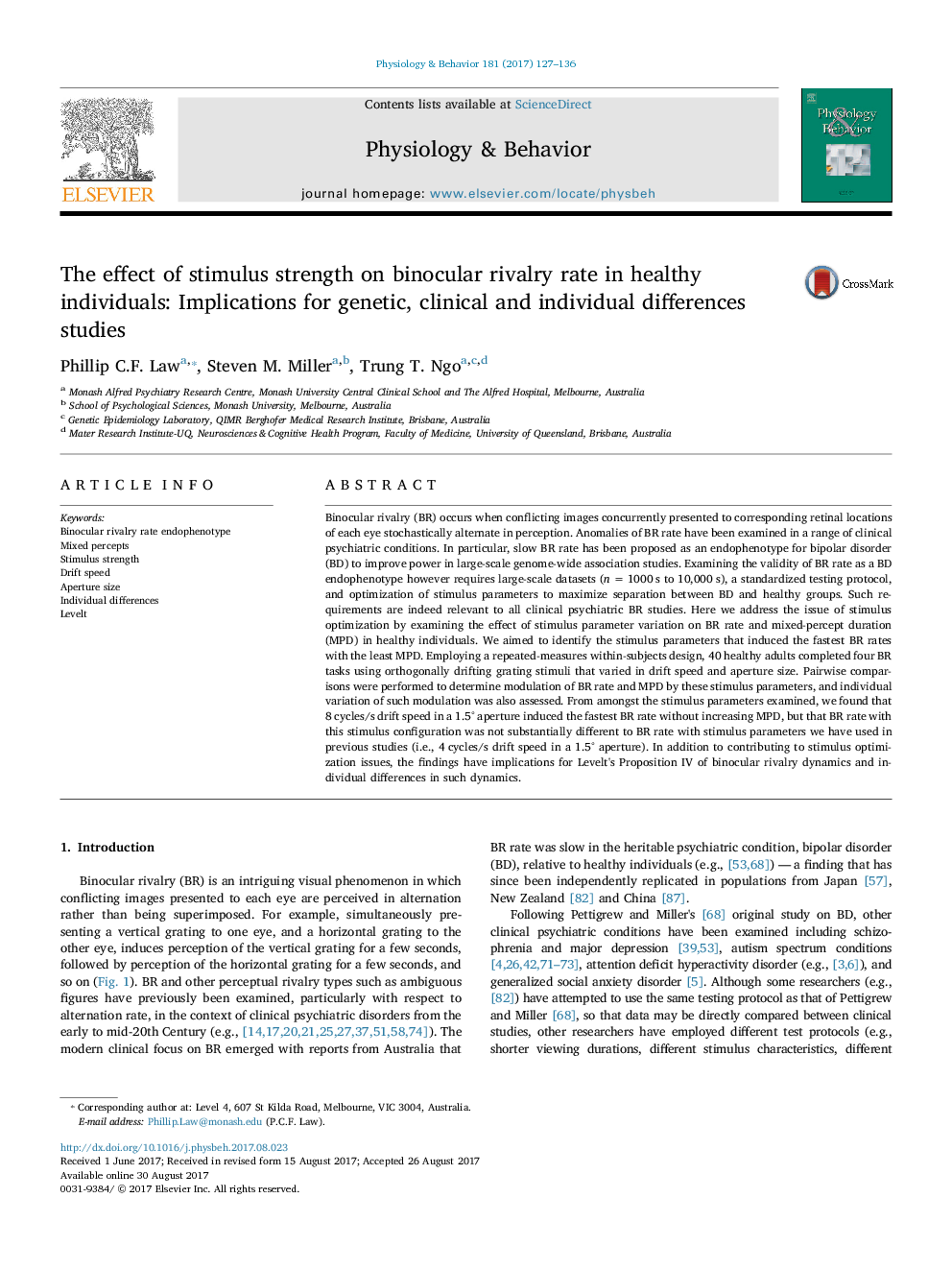ترجمه فارسی عنوان مقاله
تأثیر قدرت محرک بر میزان رقابت دوقطبی در افراد سالم: نتایج تحقیق در مورد تفاوتهای ژنتیکی، بالینی و فردی
عنوان انگلیسی
The effect of stimulus strength on binocular rivalry rate in healthy individuals: Implications for genetic, clinical and individual differences studies
| کد مقاله | سال انتشار | تعداد صفحات مقاله انگلیسی |
|---|---|---|
| 134092 | 2017 | 10 صفحه PDF |
منبع

Publisher : Elsevier - Science Direct (الزویر - ساینس دایرکت)
Journal : Physiology & Behavior, Volume 181, 1 November 2017, Pages 127-136
ترجمه کلمات کلیدی
اندوفنوتایپ نرخ رقابت دوقلو، ادراک های مختلف قدرت تحریک کننده سرعت رانش سایز دیافراگم، تفاوتهای فردی، سطح
کلمات کلیدی انگلیسی
Binocular rivalry rate endophenotype; Mixed percepts; Stimulus strength; Drift speed; Aperture size; Individual differences; Levelt;

